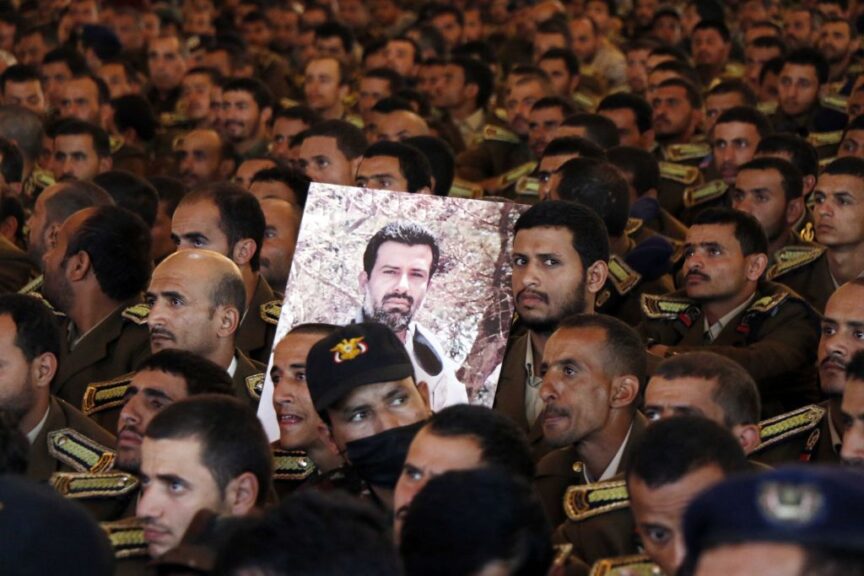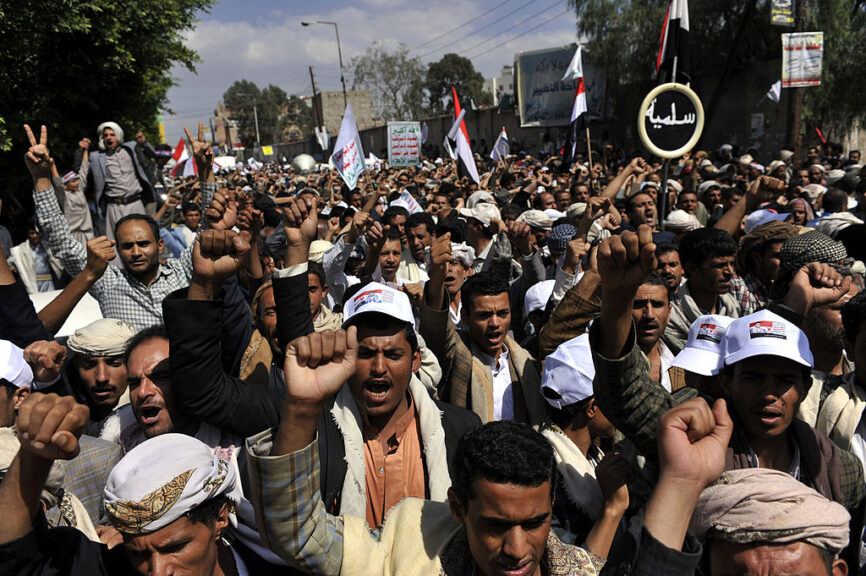As tensions continue to escalate in the Middle East in the wake of the deadly terror attack on Israel by Hamas, another Islamic militant group, the Houthis, has gained infamy with a series of attacks on ships in the Red Sea from their bases in Yemen.
In one of their latest provocations, a Houthi anti-ship missile reportedly came within just a few seconds of striking a U.S. Navy warship before it was shot down by the ship’s defensive weapon system.
The Biden administration re-designated the Houthis as a terrorist organization — it was taken off the foreign terrorist organization list by Biden in early 2021 — and the U.S. is reportedly planning further strikes against Houthi positions in Yemen. With the prospect of a full military confrontation with the United States growing by the day, it’s important to examine who exactly the Houthis are and how they came to control a large portion of Yemen.
What would become the Houthi movement was founded by Hussein al-Houthi, a religious leader in the Zaydi sect of Shia Islam that formed in Yemen during the 9th century. The Zaydis dominated the northern part of the country until a revolution in 1962 overthrew the old kingdom and established the Yemen Arab Republic.

Mohammed Hamoud/Anadolu via Getty Images
The new regime greatly diminished the Zaydi’s power in society until May 1990, when the Yemen Arab Republic unified with its southern neighbor, the People’s Democratic Republic of Yemen — the only communist state in the Middle East — to form the modern nation of Yemen.
Al-Houthi served in the Yemeni Parliament from 1993 to 1997 as part of the Zaydi-backed Party of Truth and helped found the Believing Youth, a religious association of young people who preached Zaydi doctrine and decried the influence of other Muslim sects, notably Saudi Arabian Wahabbism, in the country. Al-Houthi and the Believing Youth were particularly critical of President Ali Abdullah Saleh, who responded by cracking down on the group.
Support for al-Houthi and his movement grew in the late ’90s and into the early 2000s, especially after President Saleh expressed support for the U.S. War on Terror in the wake of 9/11. The U.S. invasion of Iraq in 2003 further radicalized the Houthi movement, and it adopted the official slogan, inspired by Iran’s infamous chant, “God Is the Greatest, Death to America, Death to Israel, A Curse Upon the Jews, Victory to Islam.” It also began communicating and modeling itself after Hezbollah, the Iran-backed terrorist organization headquartered in Lebanon.
Under orders from Saleh, Yemeni government forces began attacking Houthi bases in late 2003, and the country’s military killed al-Houthi in 2004, making him a martyr to the wider movement and intensifying its resistance to Saleh’s regime.
CLICK HERE TO GET THE DAILYWIRE+ APP
The Houthis retreated to the northwest corner of the country and managed to defeat the Yemeni military, backed by Saudi Arabia, several times over the next several years. Thousands were killed and hundreds of thousands were displaced by the insurgency, further destabilizing Saleh’s government.
During the Arab Spring in 2011, internal dissent ousted Saleh from office, and his vice president, Abdrabbuh Hadi, struggled to maintain order in the country, with major protests breaking out in 2014. The situation continued to deteriorate until Houthi militants stormed the Yemeni capital, Sanaa, in January 2015. The Houthis forced the president to resign and cemented their control over the northern part of the country, while opposition groups, which included a Saudi-backed coalition as well as Al-Qaeda, carved out areas of control in the southern regions.

Mohammed Hamoud/Anadolu Agency/Getty Images
In a strange twist, ex-President Saleh — the man whose crackdown a decade earlier had killed the Houthis’ leader and confined them to a backwater province — now allied with the radical militants. Most of the Yemeni army supported Saleh and joined forces with the Houthis.
As the Saudis continued their attacks, the Houthis drifted closer to Iran and Hezbollah for support. The United States also conducted over a hundred airstrikes on Houthi positions.
The war, as well as the Saudi blockade of Houthi territory, exacerbated a massive humanitarian crisis in Yemen. Almost 400,000 people died between 2015 and 2022, according to the Council for Foreign Relations. A cholera epidemic has ravaged the country, and five million people are at risk of famine.
In 2017, Saleh defected from the Houthis to side with the Saudis and the United Arab Emirates, but he was soon cornered in his Sanaa compound and killed by a Houthi sniper.
As the war raged on, the Houthis began attacking Saudi oil facilities, most likely with help from Iran. The Iranian Quds Force, then led by General Qasem Soleimani, supplied weapons and training to the Houthis as part of a proxy conflict with Saudi Arabia.
As one of his last acts as president in 2021, Donald Trump designated the Houthis as a foreign terror organization in response to the strikes on Saudi Arabia as well as attacks on ships off Yemen’s coast, but Biden almost immediately removed that designation. The Biden administration also ended its support for Saudi-led offensives against the group.
After several failed Saudi offensives and Houthi gains in the country, the war began to fizzle out in the wake of the COVID pandemic. The U.N. brokered a ceasefire in 2022 that lasted most of the year. Iran and Saudi Arabia reached an accord, mediated by China, to restore formal relations in early 2023, while Houthi representatives met with Saudi officials later in the year to begin negotiating a deal.
Reports indicated that the two sides were coming close to a definitive agreement when Hamas’ attack on Israel derailed progress. Almost immediately, the Houthis joined in the assault, launching missiles and drones at Israeli targets. They soon resorted to a tactic they used against the Saudis — attacking container ships. Some of the world’s largest shipping companies have ceased transit through the Red Sea, which usually sees nearly 15% of yearly global trade pass through.

Houthi Movement via Getty Images
The Houthis have expressed hatred for the United States and Israel for over 20 years, have successfully repelled numerous attempts to destroy them, and have a strong grip on the northern part of the country — the traditional stronghold of the Zaydi sect. Further U.S. strikes, along with the re-designation of the Houthis as a terror group, could tip the balance, but for now the organization possesses the upper hand in Yemen and the conflict will most likely continue for some time.

Continue reading this exclusive article and join the conversation, plus watch free videos on DW+
Already a member?

.png)
.png)

